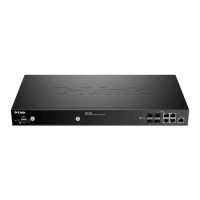
Do you have a question about the D-Link DWC-2000 and is the answer not in the manual?
| Security algorithms | 802.1x RADIUS, WPA, WPA2 |
|---|---|
| Data transfer rate | 1 Gbit/s |
| USB 2.0 ports quantity | 2 |
| Ethernet LAN (RJ-45) ports | 4 |
| Input voltage | 100 - 240 V |
| Input frequency | 50 - 60 Hz |
| Power consumption (typical) | 26.95 W |
| Storage temperature (T-T) | -20 - 70 °C |
| Operating temperature (T-T) | 0 - 40 °C |
| Operating relative humidity (H-H) | 5 - 95 % |
| Compatible products | DWL-8610AP, DWL-8600AP, DWL-6600AP, DWL-3600AP, DWL-2600AP |
| Certification | FCC Class A, CE Class A, C-Tick, IC, cUL, LVD |
| Package depth | 504 mm |
| Package width | 444 mm |
| Package height | 110 mm |
| Package weight | 5846 g |
| Pallet width | 1200 mm |
| Pallet length | 1100 mm |
| Pallet height (air) | 1095 mm |
| Pallet height (sea) | 2055 mm |
| Pallet gross weight (air) | 250560 g |
| Quantity per pallet (air) | 36 pc(s) |
| Shipping (inner) case width | 396 mm |
| Shipping (inner) case height | 480 mm |
| Shipping (inner) case length | 526 mm |
| Shipping (inner) case weight | 18755 g |
| Shipping (inner) case net weight | 17538 g |
| Number of cartons per pallet (air) | 12 pc(s) |
| Quantity per shipping (inner) case | 3 pc(s) |
| Harmonized System (HS) code | 85176990 |
| Weight | 3720 g |
|---|---|
| Dimensions (WxDxH) | 440 x 310 x 44 mm |
Provides precautions to reduce risks of bodily injury, electrical shock, fire, and equipment damage.
Guides users on accessing the wireless controller's web management interface using supported browsers.
Outlines the step-by-step procedures for performing essential basic configurations on the controller.
Covers global configuration settings for managed APs and the controller, including global setup and country configuration.
Details how to configure RF channel algorithm and power settings to optimize wireless performance.
Explains the Wireless Intrusion Detection System (WIDS) for detecting and acting on intrusion attempts.
Covers managing access points, including adding valid APs and managing discovered APs.
Details how to create and configure AP profiles to customize access points based on various criteria.
Explains how to configure SSID profiles, including settings for security and captive portal.
Covers managing wireless clients in the MAC Authentication database and implementing MAC authentication.
Covers configuring external authentication servers like RADIUS, POP3, and LDAP for enhanced security.
Describes how to back up the wireless controller's configuration settings to a file for restoration.
Provides instructions on restoring the controller's configuration settings from a previously saved backup file.
Details how to reset the wireless controller to its original factory default settings, losing all custom configurations.
Guides users through the process of upgrading the wireless controller's firmware to the latest version.
Helps diagnose issues by checking the status of the wireless controller's LEDs and their expected behavior.
Provides guidance on troubleshooting issues related to accessing the wireless controller's web management interface.
Explains how to use the reset button on the front panel to restore the controller to factory default settings.
Offers solutions for troubleshooting scenarios where the controller fails to discover access points.
Addresses issues related to access points converting from standalone to managed mode and potential connection problems.
Introduces diagnostic tools like Ping, Traceroute, DNS Lookup, and packet capture for network troubleshooting.